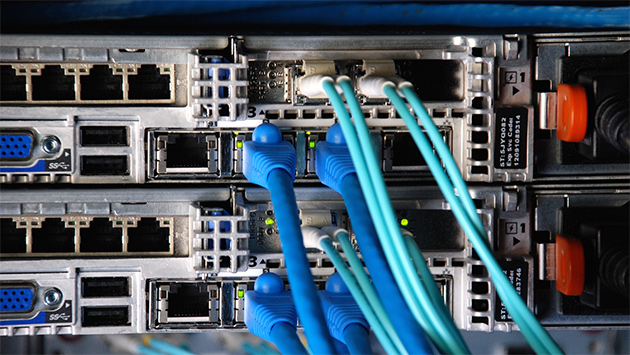
Denver's Citizen Pictures recently became one of the first facilities to install a new Quantum Xcellis storage system, replacing an aging Xsan set up. During a StudioDaily webinar yesterday sponsored by Quantum, Andrew Moraski, post-production supervisor at Citizen, Lance Hukill, president of systems integrator StorExcel, and Janet Lafleur, StorNext product marketing manager for Quantum, discussed Citizen's move as well as general operating principles for effective shared storage infrastructure. You can still view the entire webinar on demand, but we've summarized some key takeaways below.
1. Old Xsan systems can often be upgraded in place, with extensions as needed.
"We added a little bit of disk to expand out. If we're doing a proxy workflow for a show that has six angles, or a normal show with two or three cameras where we're editing full-res, we just added that extra storage to give us that flexibility." — Andrew Moraski
2. Everyone knows Ultra HD is four times the size of HD — but don't forget about HDR. "HDR adds to the load over and above whatever you're doing for 4K. You go from 8 bit to 10 bit, so that's 25% more space you require." — Janet Lafleur
3. Hybrid SAN/NAS workflow has benefits. "Some of the processes, like ingest, might need a SAN-based type of platform. When you're doing proxy-based editing, a NAS-based platform is sufficient. Having a Quantum Xcellis-type of converged architecture allows you the extensibility to do both approaches." — Lance Hukill
4. Security measures should include Open Directory and LDAP at the least. "I'm still surprised that a lot of customers aren't using Open Directory or Active Directory within the production environment. That needs to become more general hygiene or best practice — that you should use real authentication techniques just to have your own internal users know who should have access to what files. Whether it's Open Directory or LDAP, that kind of authentication schema is critical." — LH
5. It's never too early to think about asset management, even if you haven't yet implemented a media asset management (MAM) solution. "If you're not doing asset management, hopefully you have a very structured project folder nomenclature, where even the project names and file names have, somewhat, embedded metadata. If and when you do go to an asset-managed platform, that transition — to map the content and metadata fields and project structures — can more easily go into the platform you end up choosing." — LH
6. You can have easy access to your archive even without using a MAM. "A smart file system can offer transparent access to the archive, like StorNext does with its file system. Even if you're not using a MAM you can still access a file that's on tape or in object storage in the cloud exactly as you would having it online storage. The only difference is there's some latency involved with tape, but it's still seamless." — JL
7. You may not need back-up software or a long-term archive, but you do need to protect raw footage. "Our product has the ability to immediately, as soon as new footage comes aboard, archive it — basically, make a copy somewhere else, so that it's secure. It's fixed content. It's never going to change, so you don't need to keep checking it with any kind of backup software. So a solution that really looks at how to not just preserve the content long term but protect it the moment it enters your workflow is something to look for." — JL
8. Regularly sending files to off-site storage is a good safeguard for disaster recovery. "When shooting in the field … we transfer to two sets of drives, and when they come in we send one to off-site storage and then the other one gets put onto the SAN and backed up nightly, as well. We have multiple copies of content everywhere, so if anything was to happen, whether it's a building issue or a deletion issue, we have copies elsewhere and we can continue to crank out content." — AM
Topics: Blog Technology citizen pictures Quantum storexcel
Did you enjoy this article? Sign up to receive the StudioDaily Fix eletter containing the latest stories, including news, videos, interviews, reviews and more.
